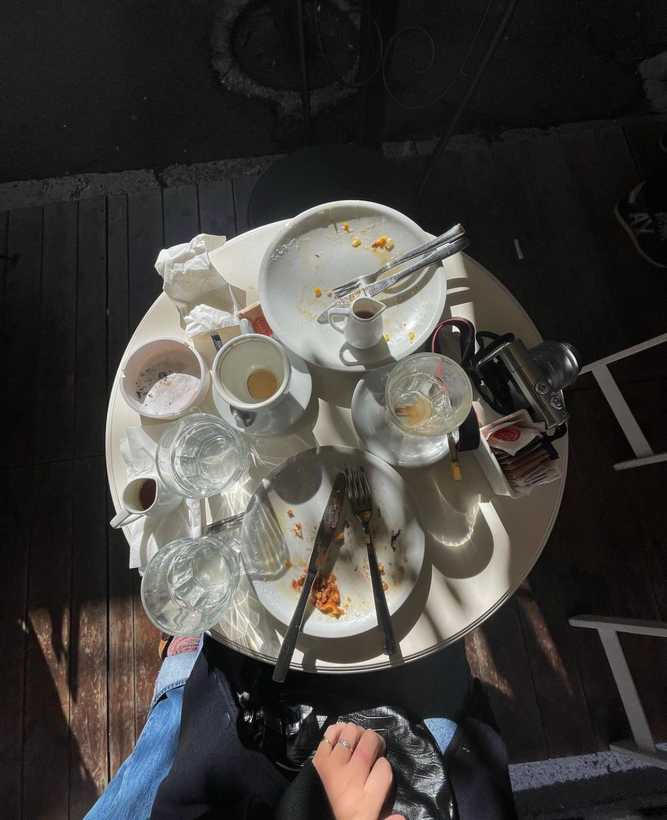The Italians have a reputation, mostly deserved, for eating not just well but wisely. We’ve heard it all before: Mediterranean diet, fruit and vegetables when in season, no G.M.O.’s, everything as local as possible (even McDonald’s advertises its use of domestic beef only), plus recent proposed bans on infamies such as lab-produced meat and flour made from insects.
This could be why Italians enjoy greater life expectancy than we Americans do, No. 8 on the U.N.’s list—84.20 years—compared to our miserable No. 40 (79.74 years). They obsess over the most arcane aspects of the things they eat, and strive to obtain them from as close to the source as possible. I once had a turkey dinner that began with a five-minute drive to a poultry farm, where we watched as our eventual meal was chased around the barnyard, trussed, decapitated, exsanguinated, plucked, gutted, and presented to us in a bag. Italians tend to be kitchen conservatives—custom-bound, slow to change, and trusting in the culinary wisdom and habits of their grandmothers, who take a dim view of any dish they can’t produce at home.
Given all that, everyone would probably do well to eat as the Italians do. Just not at breakfast.
It’s not only that their everyday staple, the cornetto (known everywhere else as the croissant), is, nutritionally speaking, sketchy. The cornetto is actually at the healthy end of their breakfast spectrum, compared to the versions filled with Nutella, sweet cream, or marmalade, or skipped over altogether in favor of the ciambella—a large, sugar-covered donut—or a heavily processed cookie from Italian staple Mulino Bianco. In summer, even a brioche stuffed with gelato can be respectably taken as the morning meal in some parts.
These breakfast habits seem even weirder given how much of Italy is still agricultural. Here in the U.S., we’re used to depictions of farmers hunched over enormous spreads of pancakes, waffles, toast, potatoes, eggs, bacon, sausage, steaks, and so on—high-octane, protein-rich fuel to keep us alive at least until lunch. No such luck in Italy.
Everyone would probably do well to eat as the Italians do. Just not at breakfast.
Unsurprisingly, the Italian meal runs counter to current nutritional guidance, summed up in a recent New York Times article titled “Secrets of a Healthy Breakfast.”
According to the Times:
“To maintain healthy blood sugar, energy and fullness levels until your next meal, getting the right balance of protein, fiber and unsaturated fats at breakfast is important,” said Lauren Harris-Pincus, a registered dietitian in New Jersey.
“This roughly translates to at least 20 grams of protein, eight to 10 grams of fiber and 10 to 15 grams of unsaturated fats, totaling about 300 to 350 calories,” Ms. Harris-Pincus said.
Compare that to the cornetto’s nutritional values, a measly 5 grams of protein, 1.5 grams of fiber, and 12 grams of fat, roughly—definitely not up to Harris-Pincus’s high standards.
Neither did the Italian breakfast work for Jesse Smeal, who lives in Rome but was born 49 years ago in North Towanda, near Buffalo. After college, followed by stops in Ireland, France, England, Cambodia, Thailand, and Vietnam, he settled into Italy’s capital city to study political science and international relations. It was then that revelation struck.
“Cornetto and cappuccino weren’t cutting it anymore,” Smeal tells me. “Italian breakfast for us—for most people—is the most ridiculous thing in the world.”

Rather than go on suffering, in 2013 he and his Roman wife, Carolina, opened Homebaked Grandma’s Kitchen, a tiny restaurant serving American breakfast in the city’s Monteverde Vecchio neighborhood.
Their earliest customers were college students from American University, a few blocks away. “You know,” Smeal says, “kids go out and party and get drunk and then it’s five in the morning and you’re looking for a diner. You want bacon and eggs, not a cornetto and coffee.”
Romans were skeptical. “Our architects thought we wouldn’t last three months,” Smeal says. “The place was full, but with non-Italians. Our neighbors came only to say how stupid we must be and how terrible American food was.” A decade later, on a late fall Saturday morning, it was the only place in the neighborhood with people standing in line outside, waiting for one of its 17 seats.
Inside the restaurant, a chalkboard menu (in English) and American college pennants hang from the walls, and a large map of the U.S. is covered with pushpins indicating customers’ hometowns, alongside Post-it love notes, mostly collegiate, like “UNC Charlotte hearts Homebaked!” and “Go Horned Frogs!”

At the tables, Italians and Americans are indistinguishable, at least where their meals are concerned, though the natives skew younger (and dressed better). Everyone seems to be having orange juice.
“Is this your usual breakfast?” someone asks an Italian family of four poised over eggs, bacon, and waffles.
“Not really,” the mother says. “No one could eat this way every day.”
Today, Smeal says, half his customers are American tourists, homesick at least where breakfast is concerned. Ten percent are U.S. citizens living in Rome. The rest are Romans who have finally come around.
“The Italians eat less than we do,” he says. “They order American breakfast but almost always without butter because they’re afraid of it. They’re still afraid of eggs, too—they all worry about eating too much cholesterol. Like their grandmothers taught them. They tend to order the sweet things on the menu. We’ll get four old ladies who split an order of pancakes—they’ll have one each. And with Nutella, not syrup.”
Which is not to say that everything here at Grandma’s is made strictly for American tastes. “I have to serve espresso and cappuccino, obviously,” Smeal adds. “I didn’t even want to do Italian coffee, but my wife said, ‘No, we have to.’”
Bill Tonelli is the editor of the The Italian American Reader
